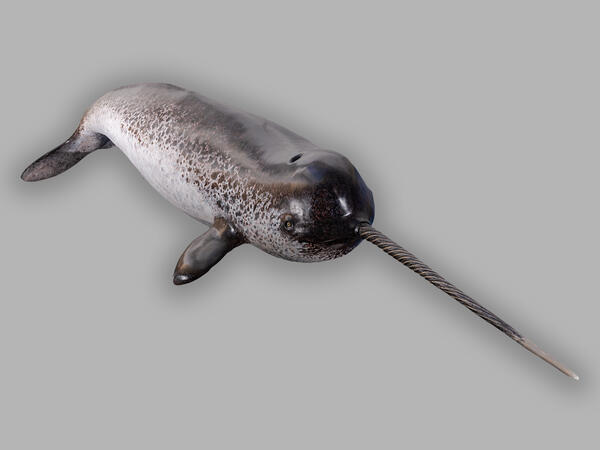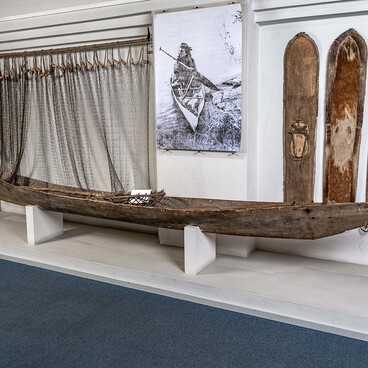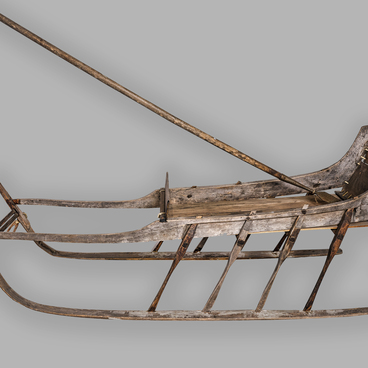The name narwhal is derived from the Norwegian words nar — “corpse” — and hval — “whale”. The comparison with a corpse is due to the fact that the gray spotted skin of the narwhal resembles the skin of a drowned sailor. The scientific name of the narwhal is Monodon monoceros, which means “one tooth, one horn”, so this animal is also called a sea unicorn.
Its closest relative is the beluga whale, a polar dolphin. Narwhals and beluga whales belong to the group of toothed whales and are the only living representatives of the family. The body length of an adult narwhal reaches 4.5 meters, while newborn calves are 1.5 meters long.
Adult male narwhals can weigh up to three tons, with one-third of their weight made up of fat. The narwhal’s head is unusually round with a protruding forehead. There is no dorsal fin, and the lateral ones are quite small and elongated. Narwhals have only one pair of large upper jaw teeth, with the left one, once it projects, turning into a spirally twisted tusk, which can be three meters long and weigh up to 10 kilograms.
The narwhal tusk is unique in its structure: it is very strong and flexible, making it almost impossible to break. Scientists are still arguing about the purpose of the tusk, which only males have. According to different versions, narwhals need tusks for mating games and for making holes in the ice. It is proved that the tusk is permeated with nerve endings: it is a sensitive organ that helps the animal identify water temperature and pressure. Narwhals do not fight with their tusks or use them as weapons — they may rub with them to clean off plaque and occasionally use them to stun prey.
The narwhal’s diet consists of deep-sea small fish. They prefer most boneless, soft fish; molluscs, including cephalopods: octopuses, cuttlefish, squids; crustaceans; various Northern fish: halibut, arctic and polar cods, red drum.
Narwhals live in cold waters along the edge of the Arctic sea ice. Their main natural enemies are orcas, polar bears and Greenland sharks. Indigenous peoples of the Arctic used narwhal meat for food, guts for rope, and skin for shoes and belts.
The narwhal is included in the Red List and the
hunting of narwhal is restricted in many countries of the world. There is no
precise data about its population in the 21st century. The exhibition of the
museum displays a full-size model of an adult male sea unicorn.



